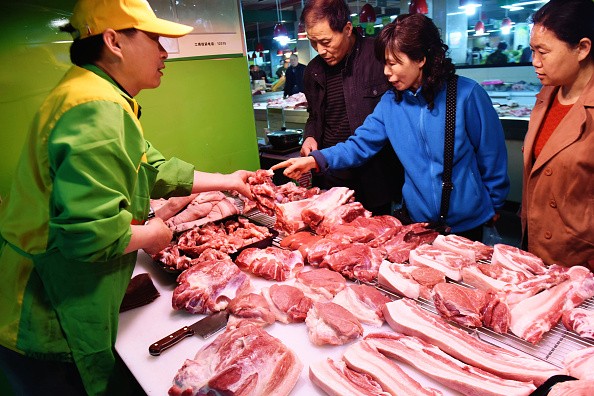To help mitigate the risks of the unstable prices of pork, the Dalian Commodity Exchange (DCE) launched the pork index in the commodity market.
Deeply rooted in the Chinese culture, the pork consumption in China cannot be taken lightly. Pigs have been in the heart of Chinese family life. The Chinese character for "family" is actually a pig under a roof.
In the Chinese culture, pigs symbolize prosperity, fertility and virility. They are celebrated in a number of Chinese poems, stories and songs.
Over 500 million swine are produced and consumed by China every year. This is half of all the pigs in the world. 60 percent of China’s meat consumption is pork, granting it control over the country’s food inflation.
Fluctuations in the prices of pork have an effect on the Chinese economy. For instance, when a disease killed a vast number of Chinese pigs in 2007, the pork prices spiked by 87 percent in a year. The surge drove China’s inflation to increase in levels exceeding those in more than a decade.
In a report by Quartz, commentators named the inflation data in China as the “China Pig Index” due to the effect of pork prices on food prices in the country.
Historically, pork prices in China have been unstable mainly due to the dominance of small-scale farmers in the market. These farmers are highly responsive to changes in pork prices. They butcher the pigs when there is much supply and the prices are low. Killing the pigs instead of breeding them would mean a lower supply in the future, driving the prices up.
On March 24, China-based futures exchange DCE, with the help of China’s agriculture industry, introduced its first official pork price index, aiming to lessen the effect of pork prices on the overall food prices in the country.
The data used as the basis for the pork index is gathered from 89 large pork suppliers from 16 regions across the country, representing 32 percent of the country’s pork supply. Daily updates are expected from the index in order for it to reflect the spot price of pork.
The pork index creates the foundation of future hog contracts. A contract stating the purchase pork at an agreed price for a future date will protect traders from price risks.
Being the largest marketplace in China, DCE’s introduction of future hog contracts would facilitate mitigation of risks from unstable pork prices. The pork index will help the players in the commodity market to plan ahead of price movements and promote cooperation in the pork industry.




























